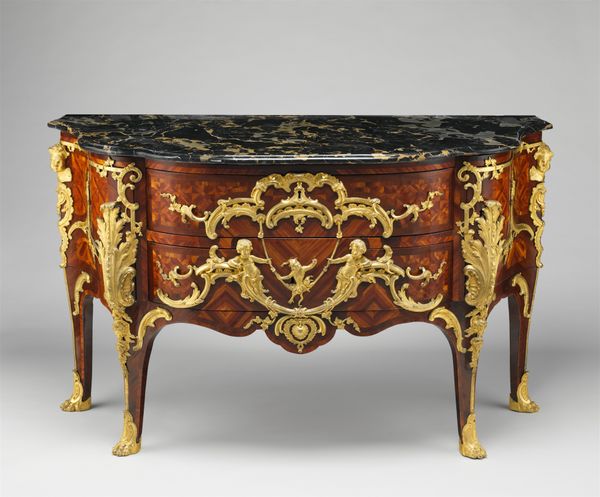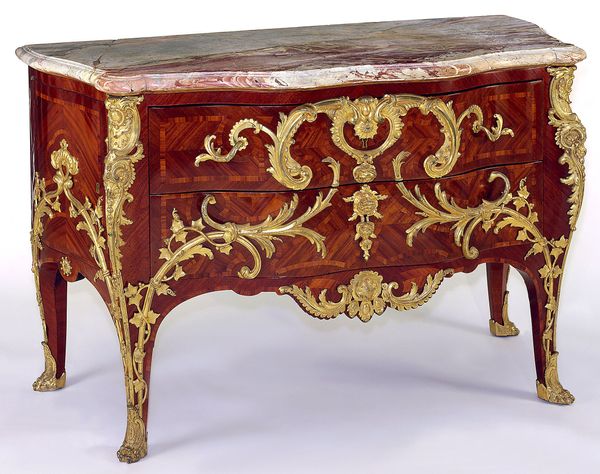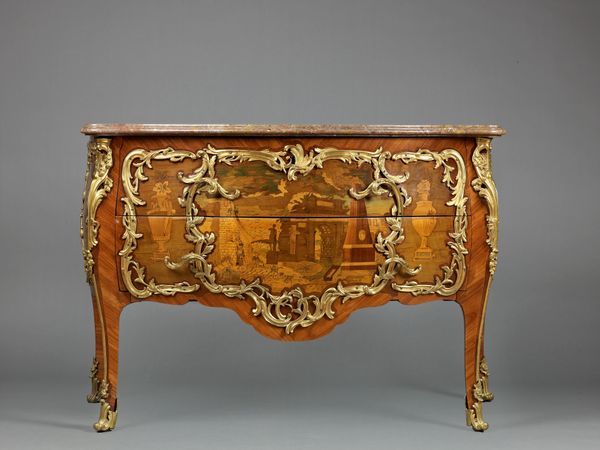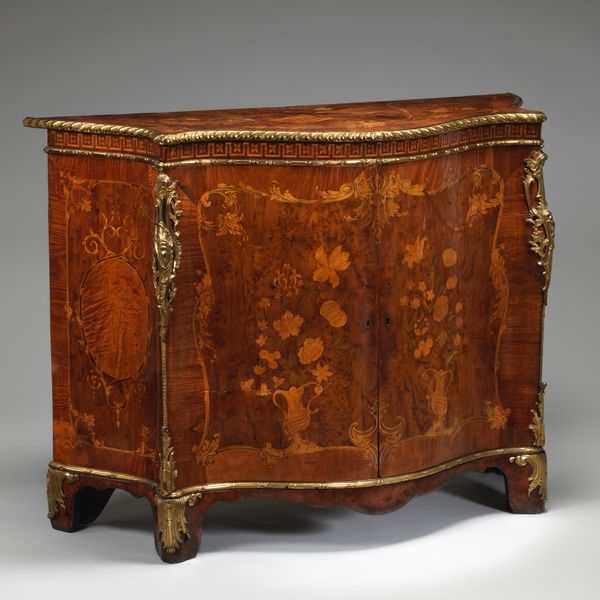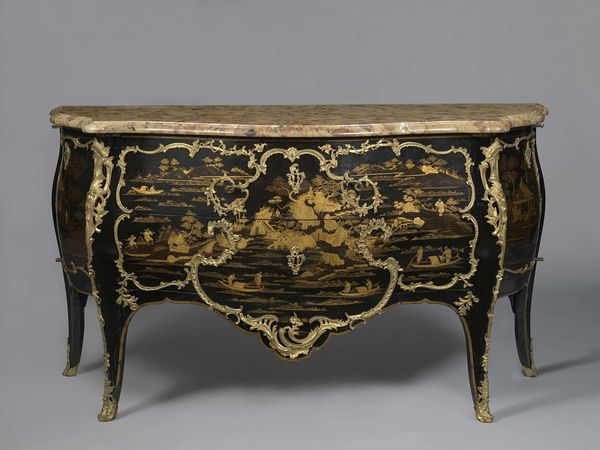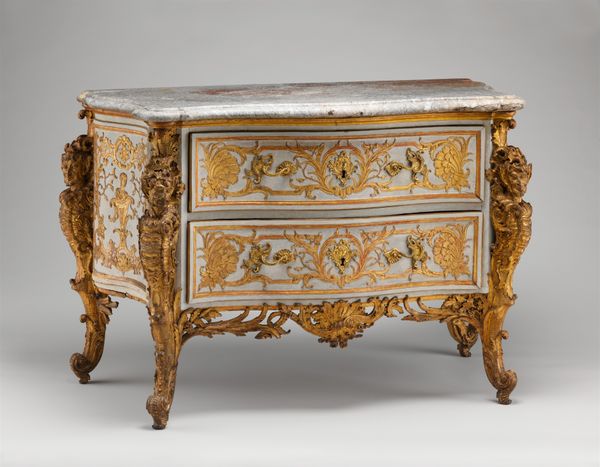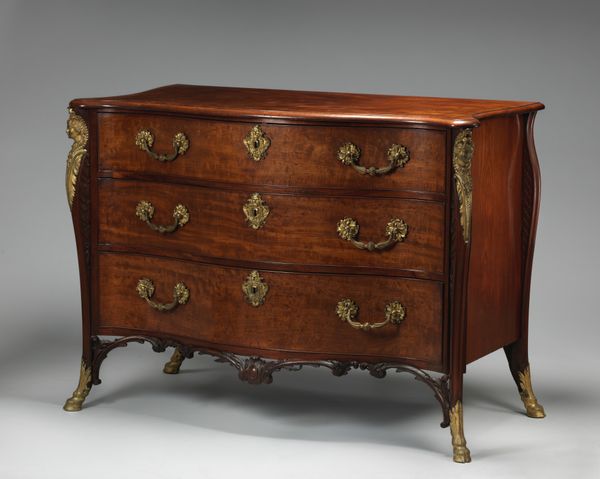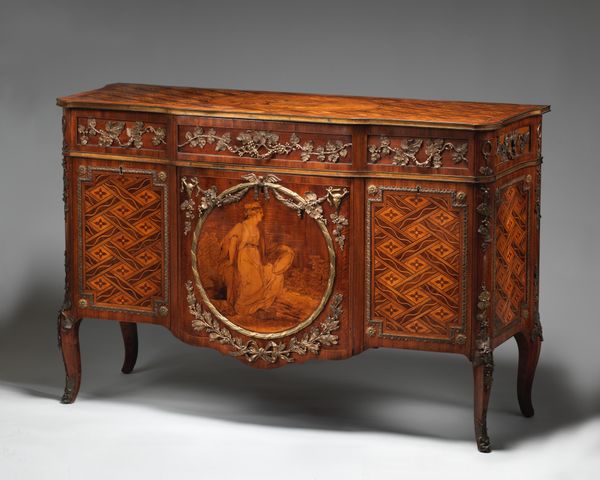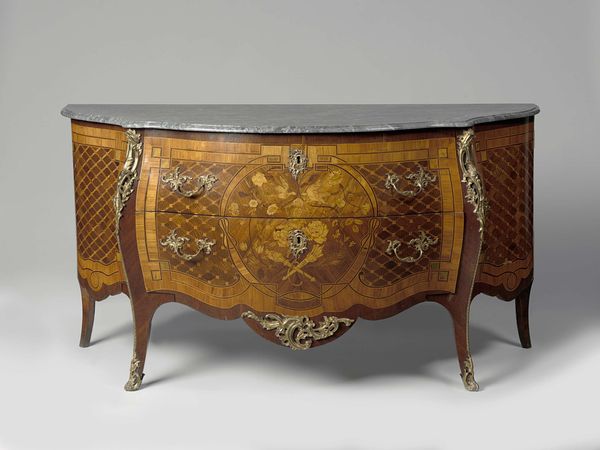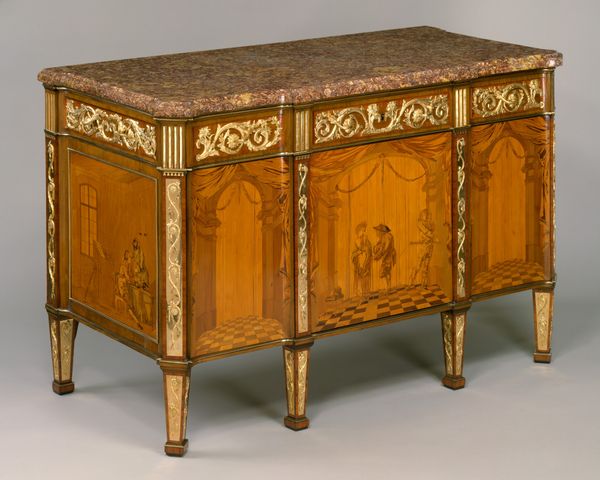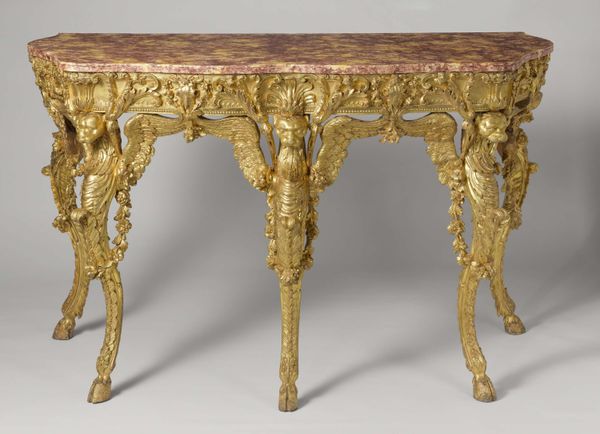
sculpture, wood, gilding
#
wood texture
#
furniture
#
sculpture
#
wood
#
gilding
#
decorative-art
#
rococo
Dimensions: Overall: 35 × 59 3/4 × 27 1/8 in. (88.9 × 151.8 × 68.9 cm)
Copyright: Public Domain
Curator: What an elegant piece! This commode, dating back to 1764, hails from Croome Court in Worcestershire and is currently housed here at the Metropolitan Museum of Art. It was crafted by Peter Langlois. Editor: The first thing that strikes me is how this commode manages to be both sturdy and light. It seems grand but almost playfully so, doesn't it? The curves, the gilt—it’s like frozen music. Curator: Indeed. The Rococo style is strong here. The commode's wood marquetry, the delicate inlay of flowers and ribbons, speaks volumes about the elite tastes of the time. Notice how the eye is drawn to the symmetry, balanced yet vibrant. Editor: I see these floral patterns, and I immediately think about status. A piece like this isn't just functional; it broadcasts wealth and refinement. But also, perhaps it was meant to convey something about the inhabitants’ ideals, or even aspirations? Curator: Absolutely. Each flower might have held a specific meaning—love, prosperity, remembrance. In that period, these were understood codes. A commode wasn't just a piece of furniture. It was an object loaded with visual messaging, carefully chosen to reflect a family’s standing and aspirations. And let's not forget the influence of figures like Madame de Pompadour; her preferences really dictated the era's tastes, creating a ripple effect on furniture design. Editor: Right, and think about where this object would have lived – not just in any room but in a space designed to impress. How the gilded details would have caught and reflected the light from candles or a roaring fire. The commode is both beautiful in itself but its impact is so dependent on its context. Curator: Precisely. By analyzing this piece, we’re offered glimpses into the economic, social, and political currents that shaped its creation. What do you think about its endurance over time? Editor: Well, objects like this remind us that even supposed "luxury" or "frivolity" – often criticized in periods of revolution – can speak so profoundly about the cultural and social narratives of the past. It continues to fascinate. Curator: Indeed. The commode stands as an opulent marker of a transformative period.
Comments
No comments
Be the first to comment and join the conversation on the ultimate creative platform.

